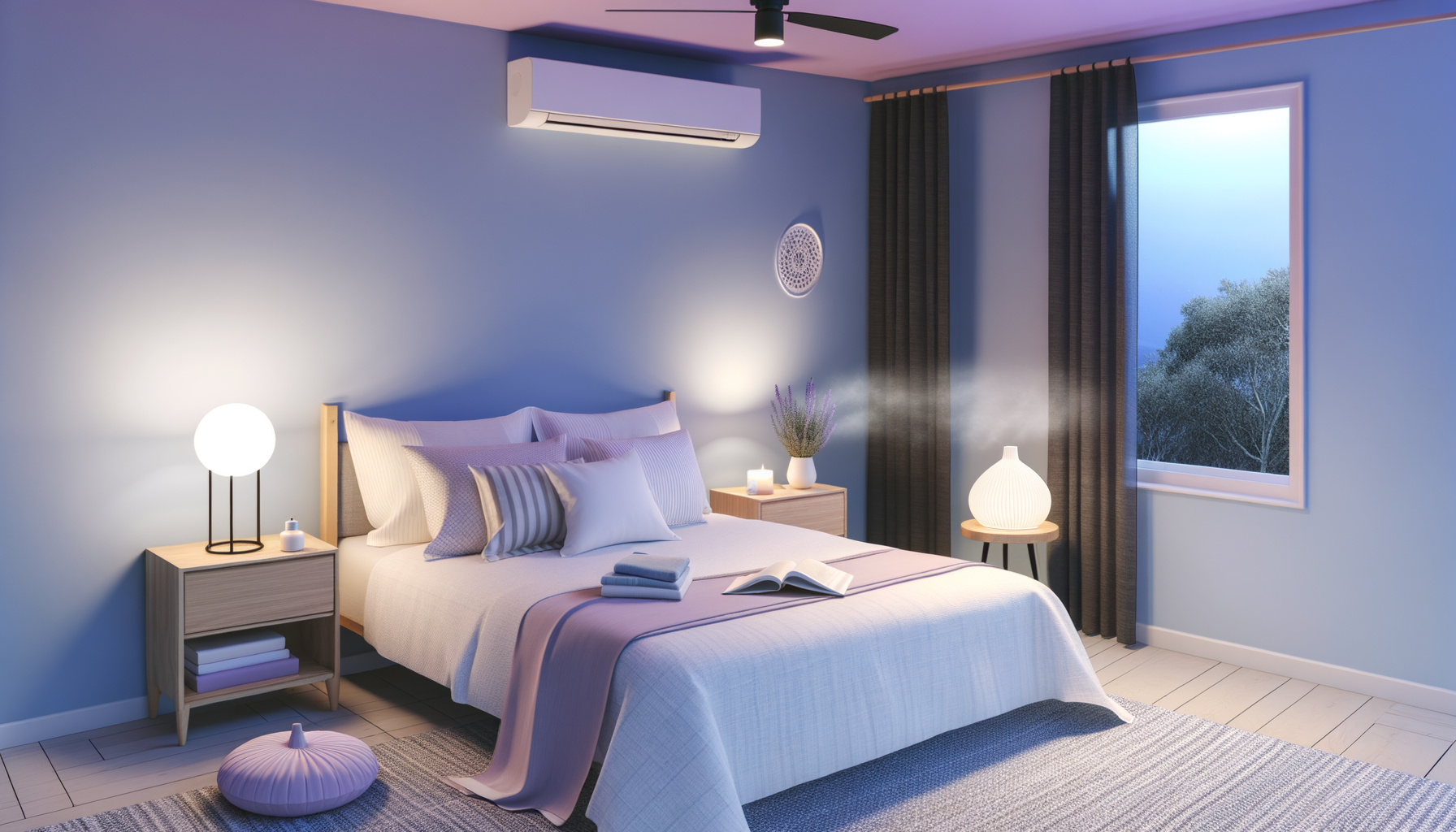Menopause is a natural biological process that marks the end of a woman’s reproductive years, typically occurring around the average age of 52. However, the journey into menopause, known as perimenopause, can begin years earlier and is characterized by a decline in the production of hormones such as estrogen and progesterone. This transition is highly individualized, with some women entering early menopause in their 40s or even earlier due to premature ovarian insufficiency or induced menopause from medical treatments. The onset and duration of menopause-related symptoms vary widely, making it a deeply personalized experience for each woman.
Symptom Spectrum and Sleep Patterns
One of the most common and disruptive symptoms of menopause is the impact on sleep quality. Hot flashes, which affect 70-80% of menopausal women, can cause night sweats and lead to frequent awakenings. The duration of these symptoms can last for more than five years for some, significantly affecting sleep patterns. Progesterone, a hormone that plays a role in sleep regulation, decreases during perimenopause, leading to more middle-of-the-night awakenings and chronic insomnia. Additionally, fluctuations in other hormones like cortisol can further exacerbate sleep disturbances. As a result, many women experience a range of sleep-related issues, from difficulty falling asleep to staying asleep, ultimately impacting overall health and well-being.
Emotional Connectivity and Lifestyle Influence
The menopausal transition is not only a physical process but also an emotional one. Mood changes, anxiety, and stress can arise or intensify during this period, further influencing sleep quality. Emotional well-being is deeply connected to sleep, as the mind and body are interdependent. Lifestyle factors also play a significant role in sleep health during menopause. Practices such as maintaining a regular sleep routine, creating a comfortable sleep environment, and engaging in relaxation techniques can help mitigate some of the sleep disruptions caused by menopause. Additionally, avoiding stimulants like caffeine in the evening and establishing a pre-sleep routine that includes winding down activities can promote better sleep hygiene and improve rest during this transitional phase.
Creating a Comfortable Sleep Environment
Choosing Cooling Fabrics for Bedding and Sleepwear
For many women undergoing menopause, night sweats and hot flashes can significantly disrupt sleep. To combat this, selecting the right fabrics for bedding and sleepwear is crucial. Opt for lightweight, breathable materials such as organic cotton or bamboo, which allow for air circulation and can help regulate body temperature. Wool bedding, contrary to popular belief, is also excellent for managing night sweats due to its breathability and moisture-wicking properties. When it comes to sleepwear, consider moisture-wicking fabrics and designs that are loose-fitting to enhance comfort and reduce overheating.
Embracing Darkness and Silence for Better Sleep
Creating a dark and quiet sleep environment is essential for a restorative night’s rest. Blackout curtains can be a game-changer, blocking out light pollution and signaling to your body that it’s time for sleep. If complete darkness is not achievable, consider using a comfortable sleep mask. To address noise disturbances, white noise machines or earplugs can be effective tools. Additionally, incorporating soft, calming colors into your bedroom’s design can psychologically prime you for relaxation and sleep.
Optimal Room Temperature for Menopausal Sleep
The temperature of your bedroom can have a significant impact on sleep quality. The ideal range is between 62-65 degrees Fahrenheit, but this may vary based on personal comfort. If adjusting the thermostat is not an option, consider using fans to promote air circulation. Natural latex mattresses and toppers can also help regulate temperature, as they are less likely to trap heat compared to memory foam. Remember, the goal is to create a cool, inviting space that encourages your body to drift into a deep, uninterrupted sleep.
By focusing on these key elements—fabric choice, darkness, silence, and temperature—you can transform your bedroom into a menopause-savvy sanctuary that promotes optimal sleep and rest.

Emotional and Psychological Considerations
Tackling Emotional Outbursts and Stress
Menopause can be a rollercoaster of emotions, with hormonal fluctuations often leading to mood swings, irritability, and stress. It’s essential to recognize these emotional outbursts as a natural part of the menopausal transition. Developing coping strategies, such as deep-breathing exercises, regular physical activity, and engaging in hobbies, can provide outlets for stress and help stabilize mood swings. Additionally, maintaining open communication with loved ones can foster understanding and support during these times of emotional upheaval.
Creating a Sanctuary for Emotional Well-being
Your bedroom should be a sanctuary that promotes emotional well-being. Consider incorporating elements that induce calmness, such as soft lighting, soothing colors, and comfortable furniture. Personal touches like family photos, favorite books, or mementos can also create a sense of peace and happiness. The goal is to make your bedroom a place where you can retreat and feel secure, away from the stresses of daily life. Decluttering the space can also have a profound impact on your mental state, reducing anxiety and promoting relaxation.
Mindfulness and Relaxation Techniques
Mindfulness and relaxation techniques are powerful tools for managing the psychological aspects of menopause. Practices such as meditation, yoga, and tai chi can help focus the mind and foster a sense of tranquility. Before bedtime, consider a routine that includes mindfulness exercises to prepare your mind and body for rest. Progressive muscle relaxation or guided imagery can also be effective in easing into a restful state. By incorporating these techniques into your nightly routine, you can improve sleep quality and enhance overall emotional well-being.
Remember, creating a menopause-savvy bedroom is not just about the physical environment; it’s also about addressing the emotional and psychological needs that come with this significant life transition. By acknowledging and addressing these needs, you can create a space that supports optimal sleep and rest, helping you navigate menopause with greater ease and comfort.
Incorporating Aromatherapy and Natural Elements
The Role of Aromatherapy in Sleep Improvement
Aromatherapy, the therapeutic use of essential oils extracted from plants, has been recognized for its potential to improve sleep quality and promote relaxation. The inhalation of these aromatic compounds can influence the limbic system, the part of the brain responsible for emotions and memories, which can have a calming effect on the mind and body. Essential oils such as lavender, chamomile, and sandalwood are often cited for their sleep-inducing properties. When used in a bedroom setting, these scents can create a tranquil atmosphere conducive to restful sleep.
For those navigating the challenges of menopause, which often include sleep disturbances, incorporating aromatherapy into the bedtime routine can be particularly beneficial. The soothing properties of certain essential oils may help alleviate symptoms such as anxiety and hot flashes, thus contributing to a more peaceful night’s sleep. It is important to use essential oils safely, diluting them as necessary and ensuring they are of high quality to avoid skin irritation or other adverse reactions.
Decorating with Calming Elements and Plants
Creating a serene bedroom environment extends beyond scent to include visual elements that promote relaxation. Incorporating natural elements into the decor can enhance the calming effect of aromatherapy. For example, the presence of indoor plants not only adds a touch of nature’s beauty but also contributes to cleaner air and a sense of well-being. Plants like the snake plant or peace lily are known for their air-purifying qualities and require minimal care, making them ideal for bedroom spaces.
When selecting decor, opt for a palette of soothing colors such as soft blues, greens, or neutral tones that evoke a sense of calm. Textures also play a role in creating a restful environment; consider plush rugs, soft throw pillows, and comfortable blankets that invite relaxation. Natural materials like wood, bamboo, and stone can further ground the space and connect you to the natural world, enhancing the overall tranquility of your bedroom.
In summary, the strategic use of aromatherapy and natural elements in the bedroom can significantly improve the quality of sleep for those experiencing menopause. By engaging the senses with calming scents and visually soothing decor, you can transform your bedroom into a restorative sanctuary that supports optimal rest and well-being.

Bette 100% All-Natural Relaxing Lavender Body Lotion.
Chemical-Free
Your relaxing night time body moisturizer to leave the day’s stress behind. Decompress and wish your body good night with the calming scent of lavender.
Reducing Sleep Disruptions from External Sources
Minimizing Noise and Light Disturbances
For many women experiencing menopause, sleep can be elusive due to a variety of factors, including external noise and light. To combat these disturbances, it’s essential to create a sleep environment that minimizes these disruptive elements. Blackout curtains or shades can be highly effective in blocking out streetlights and early morning sunlight, which can interfere with the circadian rhythm. If complete darkness is not possible, a sleep mask may serve as a personal blackout solution.
When it comes to noise, consider investing in earplugs or a white noise machine. The latter can mask disruptive sounds with soothing, consistent audio. For those who share a bed with a partner, discuss the importance of a quiet environment and consider separate blankets to reduce disturbances from movement. If a partner’s snoring is an issue, encourage them to seek medical advice as it could be a sign of a sleep disorder.
The Impact of Electronic Devices on Sleep
The blue light emitted by screens on smartphones, tablets, and computers can significantly disrupt sleep by delaying the release of melatonin, the hormone that signals our bodies to prepare for rest. To mitigate this, it’s crucial to establish a no-screen policy at least an hour before bedtime. Instead, one can engage in calming activities such as reading a book or practicing relaxation techniques.
Additionally, the presence of electronic devices in the bedroom can create a psychological environment that is counterproductive to sleep. It’s advisable to remove televisions and computers from the bedroom entirely, transforming the space into a dedicated sleep sanctuary. For those who use their phones as an alarm, consider switching to a traditional alarm clock and placing the phone outside the bedroom to prevent the temptation to check it during the night.
By addressing these external sources of sleep disruption, women going through menopause can significantly improve their sleep quality, leading to better overall health and well-being.
Establishing a Pre-Sleep Routine
Cultivating Nighttime Rituals
Creating a consistent bedtime routine is a cornerstone of good sleep hygiene, especially during menopause when sleep disturbances are common. A nighttime ritual signals to your body that it’s time to wind down and prepare for rest. Begin by setting a specific time to start your pre-sleep routine and aim to go to bed and wake up at the same time every day, even on weekends. This regularity helps establish a natural sleep-wake rhythm.
As part of your ritual, consider activities that promote relaxation. A gentle skincare routine can be both therapeutic and a signal to your body that sleep is imminent. Follow this with some light stretching or yoga to ease muscle tension and calm the mind. Incorporate deep breathing exercises or a guided meditation to further reduce stress and prepare for sleep.
It’s also beneficial to create an environment conducive to sleep. Ensure your bedroom is dark, quiet, and cool, with the temperature set between 62-65 degrees Fahrenheit. Consider using a white noise machine or earplugs to block out disruptive sounds, and invest in blackout curtains to keep the room dark.
Activities to Wind Down Before Bed
Engaging in calming activities before bed can greatly improve the quality of your sleep. About an hour before your intended sleep time, start to dim the lights and engage in quiet activities such as reading a book or listening to soft music. This helps to increase the natural production of melatonin, the hormone responsible for sleep.
Avoid stimulating activities such as watching television or using electronic devices; the blue light emitted can interfere with melatonin production. If you must use these devices, consider wearing blue light-blocking glasses.
Another effective strategy is to write down any worries or to-dos for the next day in a sleep journal. This ‘brain dump’ can alleviate the mental load and prevent racing thoughts when you’re trying to fall asleep. Additionally, avoid heavy meals and caffeine close to bedtime as they can disrupt sleep. Instead, opt for a light snack if needed, and choose calming beverages like chamomile tea or warm milk.
By establishing a pre-sleep routine that includes these rituals and activities, you can create a menopause-savvy bedroom environment that promotes optimal sleep and rest.

Feeling You Have a Right to Safe Beauty & Fem Care?
If so, it may be time for a change. It starts with knowledge. We have a few suggestions in our new guides.
Advanced Strategies for a Menopause-Savvy Bedroom
Innovative Bedding and Technology Solutions
As women navigate through menopause, sleep can often become elusive due to symptoms such as hot flashes and night sweats. Innovative bedding and technology solutions can play a pivotal role in enhancing sleep quality. Cooling mattresses and temperature-regulating sheets made from materials like bamboo or specialized moisture-wicking fabrics can help maintain a comfortable body temperature throughout the night. Additionally, gel-infused pillows and cooling mattress pads can provide targeted relief for those who experience heat build-up around the head and torso.
Technology also offers new avenues for comfort. Smart beds with climate control allow for precise temperature adjustments, and sleep trackers can monitor sleep patterns, providing insights into how menopause symptoms affect rest. For those who prefer a more natural approach, weighted blankets have been shown to reduce anxiety and promote deeper sleep by simulating the feeling of being hugged or held.
Personalizing Your Sleep Space
Creating a personalized sleep sanctuary is essential for a restful night. Start by considering the color palette of your bedroom; hues such as soft blues, greens, and lavenders are known for their calming effects. Incorporating personal touches that evoke relaxation, such as family photos, artwork, or keepsakes, can also make the space feel more comforting and conducive to rest.
Adjustable lighting, including dimmer switches and smart bulbs that can mimic the sunset, can help signal to your body that it’s time to wind down. Sound machines or apps that play white noise or nature sounds can mask disruptive noises and create a soothing auditory environment. Lastly, consider the layout of your bedroom furniture to ensure a flow of energy that aligns with principles of Feng Shui or simply makes the space feel more open and peaceful.
Long-Term Considerations for Sleep Health
Investing in long-term sleep health is crucial for managing menopause symptoms and overall well-being. Regularly updating bedding and pillows to maintain hygiene and comfort is a good practice. Additionally, evaluating the longevity and support of your mattress every 7-10 years can ensure that it continues to provide the necessary support for a good night’s sleep.
Consider incorporating sleep-promoting habits into your routine, such as sticking to a consistent sleep schedule and creating a pre-sleep ritual that may include reading, meditation, or gentle stretching. Being mindful of diet and exercise can also significantly impact sleep quality. Limiting caffeine and alcohol intake, especially in the hours leading up to bedtime, and engaging in regular physical activity can help regulate sleep patterns.
Lastly, staying informed about the latest research and advancements in sleep science can empower you to make educated decisions about your sleep environment. Whether it’s a new type of pillow, an innovative sleep app, or a breakthrough in hormone replacement therapy, being proactive about your sleep health can lead to more restful nights and energized days.










